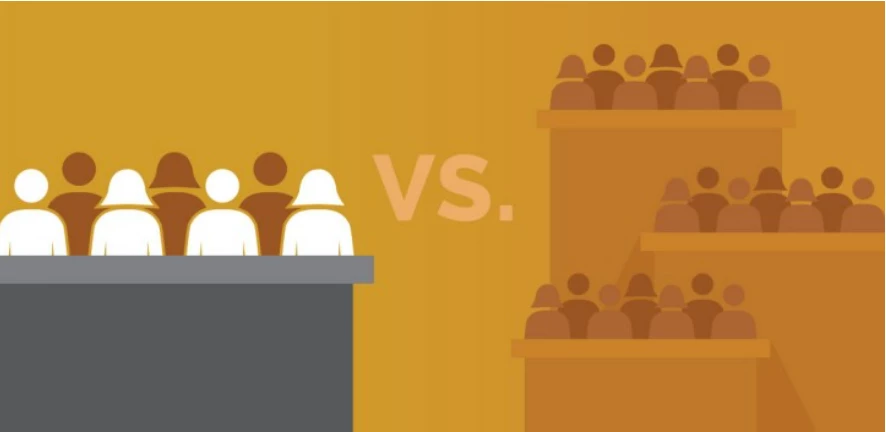We are often asked, “Three jury panels? Won’t just one jury panel work when using a mock trial to test the themes and arguments in my case? That’s what we are faced with in the real world.”
This is a very important question, and the answer is grounded in well-established social science research methodology. Following this methodology not only provides you with more confidence in the results of the jury research, but also more confidence in the strategic decisions you are making based on those results. Unfortunately, the converse is also true.
At IMS, our job is to make sure you walk into the courtroom (or any decision-making situation) armed with accurate data and well-grounded strategies. We believe the worst-case scenario for any client is to rely on jury research results based on a flawed test design that did not follow these sound principles.
With that said, we explain below several factors that can influence the number of jury panels used in a research project and the advantages to using multiple jury panels. Knowing why it is important to use multiple jury panels in your jury research is important for understanding the level of confidence you should have when interpreting the results.
Factors That Can Influence the Number of Jury Panels
The number of jury panels used for a research project has many influences. The main factors our firm considers when designing each project are (1) the appropriate test design, (2) whether or not a range of damages will be assessed, and (3) the timing of the research exercise and our client’s budget.
Test Design
The design of a test can greatly influence the number of jury panels required. IMS offers many different forms of pre-trial jury research. These research designs fall under two umbrellas: inductive research or deductive research.
For instance, focus groups fall under the inductive design umbrella, while the more traditional mock trials or deliberation groups fall under the deductive design umbrella.
The decision to conduct either an inductive or deductive design depends significantly on your specific case and your position in the litigation cycle. An inductive focus group design is not intended to be externally valid1 so the number of jury panels used is not as important to consider.
In other words, since the main goals of inductive research consist of discovering which issues are most persuasive to jurors and what questions they have about the case, the number of groups employed makes little difference. However, the number of jury panels used in a mock trial or deliberation group is a more critical factor—due to the nature of the verdict-driven, deductive design.
Damages
If a goal of your research is to learn the range of damages jurors could award, it is critical to have multiple groups to increase the reliability of your results. When ascertaining a range of damages, three groups is ideal. Two groups will often arrive at different verdict decisions—in these instances, a third group is invaluable as a “tie-breaker.”
Timing
Sometimes the decision to conduct a mock trial comes very close to trial; therefore, the time it takes to recruit enough mock jurors for a three-jury-panel project is tight. When this is the case, another option is to use two jury panels.
While this is not ideal when testing a range of damages, it is a good solution when testing themes and offers the client greater flexibility in terms of being able to test the case and receive feedback within a short period of time.
Budget
Our clients’ budgets are always a consideration when thinking about conducting any type of jury research—from a focus group or mock trial to phone surveys or post-trial juror interviews. We certainly can appreciate the cost pressures our upstream corporate clients are under. However, sometimes the push to meet a budget can interfere with the methodological principles that must be followed to ensure we obtain reliable results.
One option for reducing costs is to limit the number jury groups in the research project or the number of jurors in each group. While this can be a viable solution in some test designs where the goal is to gain jurors’ feedback through an inductive design (e.g., focus group), this may not be the best option when conducting a verdict-driven test like a mock trial or deliberation group.
Advantages to Using Multiple Jury Panels
There are certain methodological principles that are essential to follow when conducting a verdict-driven project like a mock trial or deliberation group. While we generally think of jury research as a service to help attorneys test their arguments, themes, and evidence, it is important to remember that our services are based in social science research methodology.
The number of jury panels used at a research project has strong implications for two significant methodological principles: the reliability and generalizability of the results.
Greater Reliability
Ensuring we receive reliable results is critical; otherwise, we run the risk of creating a false positive—an even more dangerous situation for your client. Using one jury panel may be appropriate for an inductive focus group project, where the goal is not to receive verdict feedback but instead receive juror opinions.
However, a one-group test is not appropriate for a mock trial when key trial strategy decisions will be based on the results. The need for a second or a third group is essential for reliability purposes (three groups is the standard, but two is also acceptable). This goes back to the notion that more data equates to greater confidence in the results.
The more jurors and verdicts you receive, the more you will be able to trust the results of your jury research project.
Generalizability
Generalizability, also known as external validity, refers to the ability to apply the results from a research project to a real-world setting (i.e., a courtroom). In most scientific studies, the extent to which the results can be translated from the experimental condition to the real world is an important consideration.
In jury research, one variable that influences this critical factor is the number of jury panels used. Essentially, the generalizability of the results relies on the mock jury panel demographics and sensibilities mirroring (as closely as possible) the actual jury panel. The larger cross-section we can obtain from a population similar to that of the trial venue, the more likely it is that our data will accurately reflect the attitudes of the actual jury pool.
Conclusion
The number of jury panels is an important variable to consider when designing a research project. Using multiple groups ensures that you are getting valid and reliable results, giving you more confidence to make strategic decisions both in and out of the courtroom.
When deciding how many panels to use, both you and your jury consultants should consider factors such as test design, budget, whether or not damages will be assessed, and timing. These factors should then be weighed against the advantages of multi-panel use (greater reliability and generalizability).
By closely following social science research methodology, your IMS team will ensure you are making your important case decisions based on well-grounded data.







